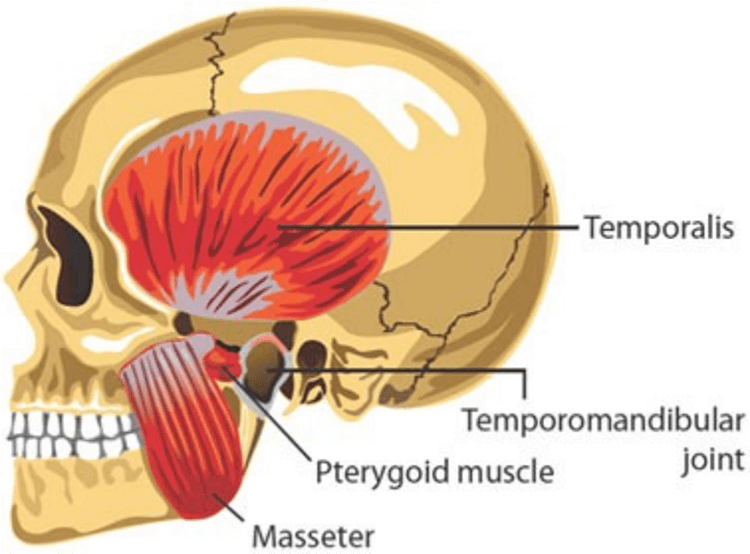What is Bruxism?
Bruxism is an involuntary clenching of the jaw and teeth grinding. It is one of the most common causes of temporomandibular disorders (TMDs) in Australia and the world.
Some of its symptoms include:
- Facial pain
- Headaches
- Earache
- Waking up with fatigue
- Pain and stiffness in the temporomandibular joint and surrounding muscles
- Worn-down teeth in chronic cases
Prolonged bruxism can lead to temporomandibular disorders (TMDS)

Causes of Bruxism:
Although the underlying causes may not always be apparent, below are some of the known risk factors:
- Stress, anxiety, or sleep abnormalities.
- Some selective serotonin reuptake inhibitor (SSRI) medication.
- Obstructive sleep apnoea (OSA).
- Lifestyle factors such as recreational drugs, smoking, drinking alcohol, and consuming excessive amounts of caffeinated beverages.
Treatments and interventions:
Chiropractic and Physiotherapy treatment to help bruxism:
- Full assessment of the temporomandibular joint, cervical spine and posture to identify any imbalances, restrictions or dysfunction and treat them accordingly.
- Releasing the tension in the musclessurrounding the temporomandibular joint can ease some of the symptoms associated with this disorder and reduce the likelihood of getting secondary headaches.
- Rehab and education of patients with muscle stretching exercises.
Mouth Gauds and splints:
Wearing a custom-made mouthguard or splint can help even out the pressure across your jaw and create a barrier between the upper and lower teeth to reduce further damage.
Stress and anxiety:
Using methods such as Yoga, meditation, breathing techniques, massage has positive effects on reducing stress and anxiety. Psychological treatments like cognitive behavioural therapy can help manage and reduce stress.
Lifestyle changes:
Dietary and lifestyle changes can help with the management of bruxism.
For more information about Bruxism, contact Perth Wellness or call us at (08) 9321 1964.
Related Posts
Perth Wellness Centre Charity Gift Box 2016
22 December 2016
We would like to thank all of our patients who participated in the Charity Gift Box Event 2016. Each year we attempt to organize donation boxes that will be given to the homeless. This year our focus was on everyday items that can be used for self care.
0 Comments1 Minute
Korean-Fluent Chiropractor West Perth
29 November 2020
Many people in the area suffer from various types of body aches and pain that seem to be challenging to treat effectively. Over time, this sort of ongoing pain can truly limit a person's overall health and inner well-being. While there are prescription medications often used to treat serious pain…
0 Comments3 Minutes


